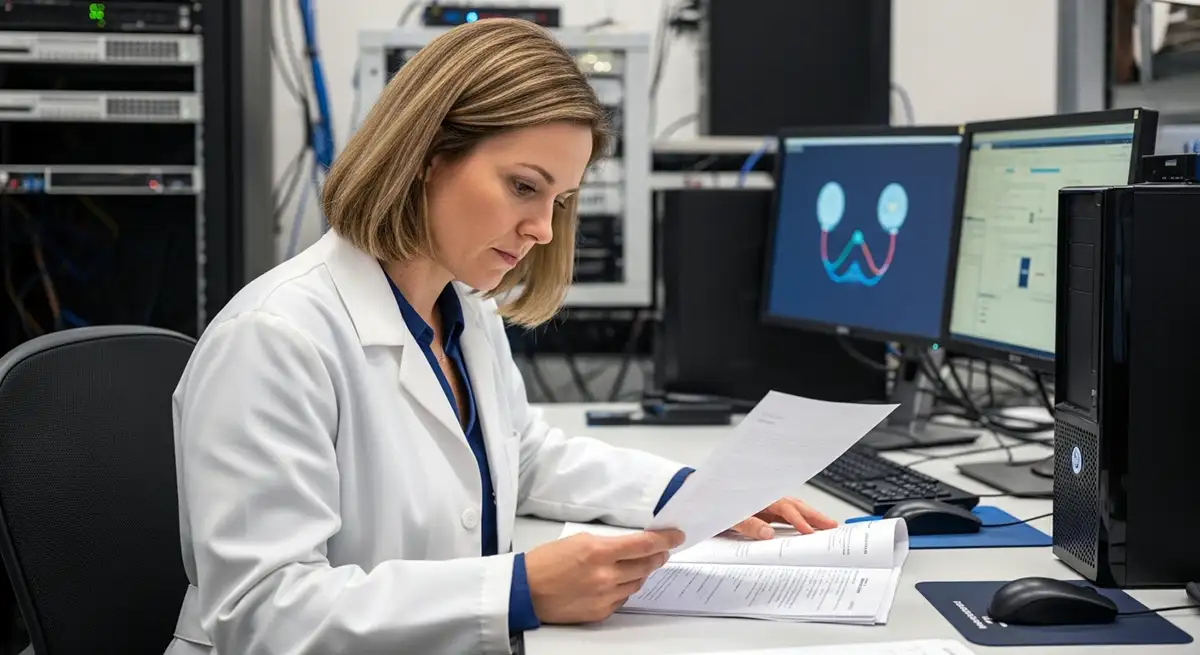
AI and Human Augmentation: Insights for 2025 and Beyond
Understanding AI and Human Augmentation
Definition of AI and Human Augmentation
Artificial Intelligence (AI) and human augmentation represent the convergence of technology and humanity, aiming to enhance human capabilities through advanced computational methods. AI encompasses a range of technologies that enable machines to perform tasks typically requiring human intelligence, such as problem-solving, learning, and decision-making. Human augmentation, on the other hand, refers to the use of technology to enhance human physical and cognitive abilities.
The integration of AI into human augmentation signifies a fundamental shift in how we interact with technology. This synergy not only optimizes human performance but also addresses significant challenges across various sectors, including healthcare, education, and industry.
Historical Context and Evolution
The journey of AI and human augmentation can be traced back to the early days of computing. Initially, AI was confined to rule-based systems that could perform specific tasks. However, with advancements in machine learning, particularly in the last two decades, AI has evolved to become more adaptive and capable of intricate tasks.
Human augmentation, while rooted in the use of tools and technology to extend human abilities, has gained momentum with the advent of wearable devices, AR/VR technologies, and brain-computer interfaces. Together, AI and human augmentation have the potential to reshape our workplaces, healthcare systems, and educational frameworks by 2025 and beyond.
Benefits of AI and Human Augmentation
Enhancing Human Capabilities
One of the primary benefits of AI and human augmentation lies in the enhancement of human capabilities. By leveraging AI algorithms, individuals can process information more efficiently, make better decisions, and focus on higher-level strategic thinking. For instance, in creative industries, AI tools can assist in generating ideas, freeing human minds for more complex creative tasks.
Additionally, in physically demanding jobs, technologies such as exoskeletons powered by AI can significantly increase strength and endurance, allowing workers to perform tasks that would otherwise be beyond their physical limits. This enhancement is not merely about replacing human effort but rather about augmenting it.
Improving Efficiency and Productivity
AI and human augmentation significantly contribute to improving efficiency and productivity across various domains. In the business sector, AI-driven analytics can identify trends and insights that may not be immediately apparent to human analysts. This capability enables organizations to make data-driven decisions swiftly, ultimately leading to more effective strategies and operations.
Moreover, tasks that require repetitive actions can be automated with AI, allowing employees to concentrate on more meaningful work. This shift not only boosts productivity but also enhances job satisfaction since employees can engage in tasks that require critical thinking and creativity.
Transforming Healthcare and Medical Practices
In healthcare, the implications of AI and human augmentation are profound. AI technologies are already being utilized for predictive analytics, patient monitoring, and diagnostic assistance. For example, AI systems can analyze medical imaging more accurately and faster than human radiologists, enhancing diagnosis and treatment plans.
Human augmentation in this sector includes the use of wearable health devices that monitor vital signs, allowing for real-time data collection and improved patient care. By integrating AI with these devices, healthcare providers can offer personalized treatments and interventions, ultimately leading to better patient outcomes.
How to Implement AI and Human Augmentation
Assessing Organizational Needs
For organizations looking to implement AI and human augmentation, the first step is to assess their specific needs. Understanding the unique challenges and goals of the organization is crucial in determining how to best leverage these technologies. This assessment should involve a comprehensive analysis of existing processes, employee capabilities, and areas where technology can offer significant improvements.
Engaging stakeholders across departments can provide valuable insights into current pain points and opportunities for augmentation. This collaborative approach ensures that the implementation strategy aligns with organizational objectives and employee needs.
Integrating AI Technologies
Once needs are assessed, the next phase involves integrating AI technologies into the existing framework. This step may encompass selecting the appropriate AI tools, platforms, and frameworks that resonate with the organization’s goals. It is essential to ensure that these technologies can seamlessly interact with current systems to avoid disruptions.
Moreover, organizations should prioritize scalability when selecting AI solutions. As needs evolve, the chosen technology should be adaptable and capable of accommodating future advancements in AI and human augmentation.
Training and Supporting Employees
The successful implementation of AI and human augmentation is heavily reliant on the training and support provided to employees. Organizations must invest in comprehensive training programs that equip employees with the necessary skills to leverage new technologies. This training should focus not only on technical proficiency but also on how to integrate these technologies into daily workflows effectively.
Furthermore, providing continuous support and resources fosters a culture of innovation and encourages employees to embrace technological changes. This support is critical in alleviating concerns about job displacement and emphasizes the role of technology in enhancing human capabilities.
AI and Human Augmentation Best Practices
Ensuring Ethical Considerations
As organizations explore AI and human augmentation, ethical considerations must remain at the forefront. The deployment of these technologies should prioritize human welfare and dignity, ensuring that augmentation does not compromise personal privacy or autonomy.
Establishing ethical guidelines and frameworks can help organizations navigate potential dilemmas associated with AI and human augmentation. This proactive approach fosters trust among employees and stakeholders, ultimately leading to a more successful integration of technology into the workplace.
Fostering a Collaborative Environment
Creating a collaborative environment is essential for the successful implementation of AI and human augmentation. Encouraging collaboration between humans and AI systems can lead to innovative solutions that maximize the strengths of both. Organizations should promote interdisciplinary teams that combine diverse skill sets and perspectives, fostering an atmosphere of shared learning and growth.
By embracing a collaborative culture, organizations can harness the full potential of AI and human augmentation, driving transformation in a manner that is inclusive and empowering.
Continuous Learning and Adaptation
The landscape of AI and human augmentation is ever-evolving, necessitating a mindset of continuous learning and adaptation. Organizations should prioritize ongoing education and training to keep pace with technological advancements. This commitment to learning ensures that employees can effectively utilize new tools and methodologies as they emerge.
Encouraging a culture of experimentation and innovation allows organizations to remain agile and responsive to changes in the industry. By fostering an environment that values adaptability, organizations can position themselves for long-term success in a rapidly changing technological landscape.
Real-World Examples of AI and Human Augmentation
Case Studies in Healthcare
In the healthcare sector, several organizations have successfully integrated AI and human augmentation to enhance patient care. For instance, the use of AI algorithms in hospitals for predictive analytics has shown promising results in identifying patient deterioration early, allowing for timely interventions.
Moreover, robotic surgical systems that augment the capabilities of surgeons have transformed surgical practices, enabling more precise and minimally invasive procedures. These innovations not only improve patient outcomes but also enhance the overall efficiency of healthcare delivery.
Applications in Manufacturing and Industry
In manufacturing, AI and human augmentation have revolutionized production processes. Smart factories equipped with AI-driven machinery can monitor performance in real-time, optimizing operations and reducing waste. Workers are augmented with wearable devices that provide real-time feedback on their performance, allowing them to make informed decisions that enhance productivity.
For example, companies like Siemens have implemented digital twins—virtual representations of physical assets that utilize AI to simulate and optimize processes—resulting in significant efficiency gains and cost savings.
Innovations in Education and Training
The education sector is also experiencing the transformative effects of AI and human augmentation. AI-powered tutoring systems provide personalized learning experiences tailored to individual student needs, enhancing engagement and retention. Virtual reality (VR) and augmented reality (AR) technologies are being utilized to create immersive learning environments, allowing students to explore complex concepts in a hands-on manner.
Organizations like Coursera and EdX are leveraging AI to curate personalized course recommendations, facilitating lifelong learning and skill development in an increasingly competitive job market.
Future Trends in AI and Human Augmentation
Predictions for 2025 and Beyond
Looking ahead to 2025, the integration of AI and human augmentation is expected to deepen. Advances in natural language processing and machine learning will enhance the capabilities of AI systems, enabling even more sophisticated interactions with humans. This evolution will lead to the development of more intuitive interfaces, allowing users to collaborate with AI seamlessly.
Moreover, the proliferation of wearable technology and brain-computer interfaces will further blur the lines between human abilities and technology, unlocking new potentials in areas such as cognitive enhancement and physical augmentation.
Potential Challenges and Considerations
Despite the promising future of AI and human augmentation, several challenges must be navigated. Issues related to privacy, security, and ethical implications will require ongoing attention. As organizations implement these technologies, they must remain vigilant to potential risks, ensuring that the benefits of augmentation do not come at the cost of individual rights or societal norms.
Additionally, addressing the skills gap will be paramount. As AI and human augmentation become more prevalent, organizations must ensure that their workforce is equipped with the skills necessary to thrive in this new landscape. This commitment to workforce development will be critical in ensuring that individuals can adapt to and leverage these technologies effectively.
Conclusion and Key Takeaways
Summary of Insights
AI and human augmentation present unprecedented opportunities for enhancing human capabilities and transforming industries. By understanding the definition, benefits, and implementation strategies of these technologies, organizations can position themselves for success in an increasingly competitive landscape.
The Path Forward for Organizations
As we move toward 2025 and beyond, organizations that prioritize ethical considerations, foster collaboration, and commit to continuous learning will be best positioned to thrive. Embracing AI and human augmentation is not merely a technological shift; it is a strategic imperative that can drive innovation and growth.
In conclusion, the integration of AI and human augmentation will reshape the future of work and society. By harnessing these technologies thoughtfully and ethically, organizations can unlock new potentials and pave the way for a more empowered, efficient, and innovative future. For further insights into the future trends of AI, visit our dedicated section on AI Future Trends.







No comment yet, add your voice below!